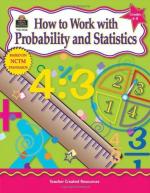|
This section contains 17,643 words (approx. 59 pages at 300 words per page) |

|
Thorny conceptual issues arise at every turn in the ongoing debate between the three major schools of statistical theory: the Bayesian (B), likelihood (L), and frequentist (F). (F) rather uneasily combines the Neyman-Pearson-Wald conception of statistics as "the science of decision making under uncertainty" with Ronald A. Fisher's theories of estimation and significance testing, viewed by him as inferential. However, in keeping with his frequentist conception of probability, Fisher viewed the inferential theory of Thomas Bayes and Pierre Simon de Laplace as applicable only where the needed prior probability inputs are grounded in observed relative frequencies. Maximum likelihood estimates and significance tests were intended as substitutes for Bayesian inference in all other cases. (F), (B) and (L) all provide a framework for comparatively appraising statistical hypotheses, but Fisher questioned whether one can fruitfully assimilate the weighing of evidence to decision making.
Given the response...
|
This section contains 17,643 words (approx. 59 pages at 300 words per page) |

|


